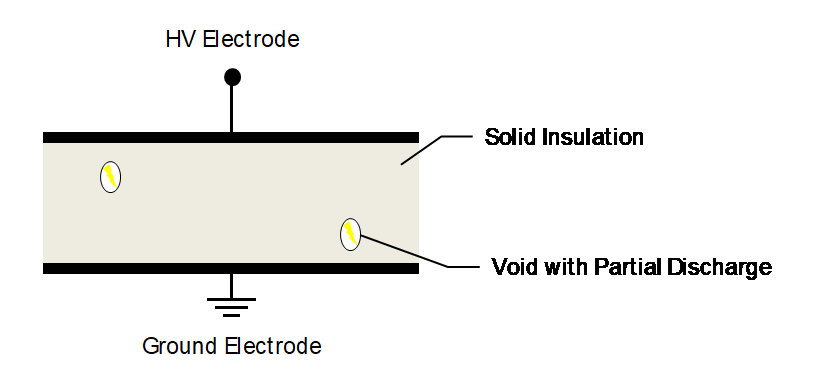Introduction
In modern times, non-graded composite resin silicon (CRS) dry bulk bushings have emerged as a useful alternative to the traditional porcelain bushing design. During manufacturing of this type of combined insulation bushing, an organic insulating resin layer is directly moulded onto the conductor rod. A silicon rubber insulator is then moulded onto the resin layer. The silicon rubber insulator protects the resin layer from the ambient environment and is moulded to form the desired dimensions and geometry of the bushing (also known as the ‘shed profile’). The silicon rubber insulator consists of a single self-contained piece.
![]()
Composite Resin Silicon (CRS) Bulk Bushing
CRS bulk bushings are commercially available for voltage ranges up to Um 72.5 kV and offer several benefits over their oil-filled porcelain counterparts:
- Dry Bushing (no insulating oil)
The CRS bushing is a self-contained dry component. Consequently, there is no risk of oil leakage.
- Safer During Catastrophic Failure
Flashover (electric arc with large fault current) in an oil-filled porcelain bushing may lead to catastrophic failure of the bushing. Catastrophic failure may result in shattered insulator fragments and oil spills. By removing the porcelain insulator body and combustible mineral oil, the CRS design eliminates the potential for shattering, risk of porcelain projectiles, and the potential resultant fire hazard. As no mineral oil is required by CRS bushings, the fire load is also less (an important consideration when designing fire extinguishing installations and calculating insurance premiums).
- Simplicity in Handling
Whilst porcelain is a comparably delicate and fragile material, CRS bushings are manufactured from tough and resistant resin and silicon materials. This makes handling and transport of a combined insulation bushing simpler. In addition, there is no need for special storage and handling measures.
- Mounting Angle
Because CRS bushings are dry, they can be installed at any angle (horizontal, vertical, and any angle between).
- Ease of Installation
Assembly of CRS bulk bushings is easier and faster. When assembling and maintaining oil-filled porcelain bushings, workers need to clamp together individual porcelain pieces and gaskets. This process is time consuming and complicated due to the protocols for oil handling. By eliminating the oil and gaskets (other than the gaskets that separate the bushings from the apparatus tank), far less maintenance is required.
- Better Pollution Performance
The external silicon rubber (SiR) surface of the CRS bushing exhibits a high level of hydrophobicity even during severe environmental pollution conditions. The hydrophobic SiR suppresses leakage current (typical value for hydrophilic porcelain is 10 mA and for silicone <1 mA), leading to a decreased risk of pollution flashover and consequently improved reliability. The low leakage current also minimises discharge activity on the bushing’s surface and minimises erosion. In effect, hydrophobicity acts as a self-cleaning property that extends service life and significantly reduces the need for insulator cleaning maintenance (compared to porcelain bushing’s which may need to be cleaned more often).
![]()
Hydrophobic Silicon Rubber (SiR) Surface
- Low Partial Discharge Level
Since CRS bushings are virtually free of any voids or imperfections, they have the lowest possible level of partial discharge (PD). Since PD is generally accepted as the predominant cause of long-term degradation and eventual failure of electrical insulation, lower PD activity will prolong the useful working life of the bushing insulation system significantly.

Partial Discharge Phenomenon in Solid Insulation
- Enhanced Operating Temperature Range
CRS bushings can operate in temperatures as low as -60°C (-76°F). For oil-filled porcelain bulk bushings, the minimum operating temperature is restricted to -45°C (-49° F) (the insulating oil’s lowest flow-temperature).
Want to learn more about electrical bushings?
Then check out our Introduction to Electrical Bushings video course!
How Electrical Bushings Work
The below video is an extract from our Mechanical and Electrical Engineering Explained Online Video Course.
Enjoying this article? Then be sure to check out our Introduction to Electrical Bushings Video Course! The course has a quiz, handbook, and you will receive a certificate when you finish the course. Enjoy!
Related Online Engineering Courses
Introduction to Electrical Transformers
How Electrical Transformers Work
Electrical Transformer Health Assessment
Why Are Transformers Rated in VA not W?
Electrical Substations Explained
Additional Resources
https://en.wikipedia.org/wiki/Bushing_(electrical)
http://www.cired.net/publications/cired2013/pdfs/CIRED2013_1219_final.pdf